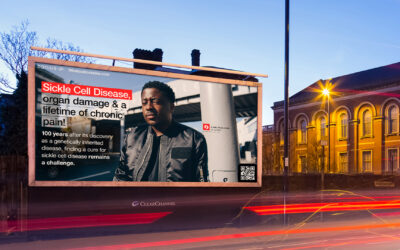This is What Sickle Cell Disease Looks Like:
A Million Different Stories, All Beginning with the Same question – how do we change this?
Good health is determined by how optimally a person’s social, environmental and economic conditions impact their lives. Their education, homes and access to quality nutrition play an equal role in affecting their general health and quality of life.
Combined, these factors determine individual and wider population health outcomes. Any imbalance, or inequality in these factors can directly cause health inequalities for multiple communities. It is therefore critical to address these wider socio-economic inequalities should we hope to improve health for those who enter and exist within our national systems.
For the UK’s 15,000 Sickle Cell Disease (SCD) patients, their condition is more than just a disease of pain. It is an illness that can result in end-organ damage, premature death, and a life restricted by what their bodies will or will not allow them
Despite the struggles they face every day, their pain and their experiences are overshadowed by health inequalities attached to SCD.
Over 300 patients in our ecosystem have shared stories of how they have struggled to access needed resources, or be admitted to A&E when they have had a vaso-occlusive crisis. When seeking relief to ease intense episodes of pain, they have been ignored, told to wait for hours to be seen, or even accused of being addicts – because of the stigma and health disparities attached to SCD.
Siliana Coelho is one of thousands who have to overcome SCD health inequalities every day.
Siliana has Sickle Cell Disease. She is also a mother, friend, and a vibrant voice within the SCD community. Whenever she meets new SCD patients, she is unsurprised to hear that their stories start the same, and echo her own. Like her, they have been overwhelmed by the additional challenges that health inequalities add to living with SCD. They too have also struggled with waiting for hours on end to receive treatment, while watching others being easily admitted into care. According to Siliana, conversations around health inequalities in SCD always begin and end with awareness; or the lack thereof. She says:
“When our community meets and gets to talk about our condition, we always say that it’s very weird how there is a lot of noise about other conditions all over the world, but not SCD. Diabetes is all over the world. Cancer is all over the world. But SCD – people are quieter about it. So many Black people in different countries suffer from the condition, but it feels like we’ve been shut out. That, in itself, is discrimination.”
“Because of this, we often have to ask ourselves – why don’t people talk about SCD as much as other conditions? Is it because SCD is a condition that mostly affects black people? Is it because there’s no awareness? Either way, I feel like the conversation needs to start with health inequalities, and how we need to start educating about our experience.”
Sekayi Tangayi, Specialist Nurse at East London NHS Foundation Trust and a leading voice in the UK’s SCD clinical landscape, sheds light on why so many of her patients encounter health inequalities. She highlights that because it is a condition that affects a minority and marginalised community, SCD patient care is at risk of being waylaid or deprioritised.
“We have to understand that this is a marginalised group of what is thought as immigrate problems, that do not impact the mainstream indigenous British population. It’s not an obvious health inequality but a subtle one whereby services are provided but insufficient resourcing is provided. For instance there is a lot of resourcing in training costs for nurses in many other diseases, but in SCD it’s limited.”
In addition, Sekayi notes that the missing emphasis on training specialist health practitioners is due to overarching disparities and a systemic lack of focus on the condition. Without giving future healthcare professionals the specialist knowledge they need to care for SCD patients, the community falls at risk of encountering deeper health inequalities.
“SCD among other conditions are not included in the student nursing curriculum There isn’t a huge career progression compared to cancer or diabetes. So, you find that nurses who work in SCD care are those who choose it because it’s their passion. They elect to treat SCD patients for reasons other than money or career progression.”
To shed light on experiences like Siliana’s and the SCD community’s, we’ve partnered with Global Blood Therapeutics and patient organisations like the Sickle Cell Society, to not only drive further awareness but to bring change around health inequalities. By working with patients, organisations and healthcare professionals, Sanius Health’s billboard campaign hopes to spread awareness on Sickle Cell Disease across the UK and beyond.
For more information on what you can do learn more about or engage in research, visit our page: https://whatscdlookslike.com/
If you would also like to get involved with supporting the SCD community, feel free to contact us as [email protected]



